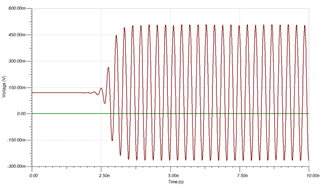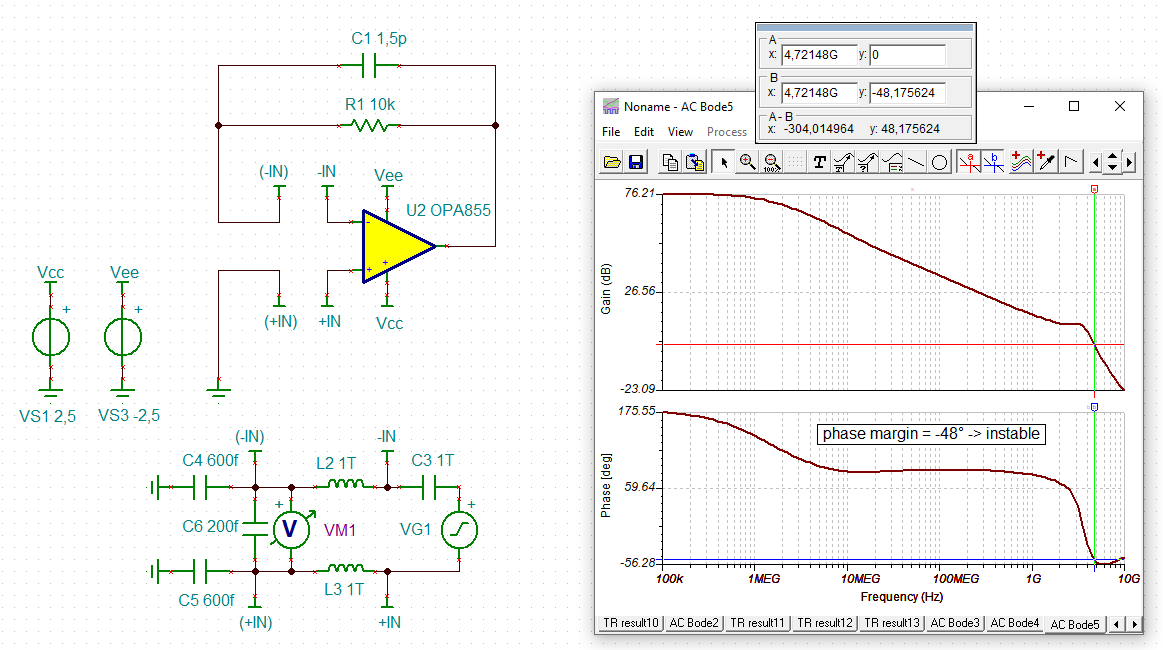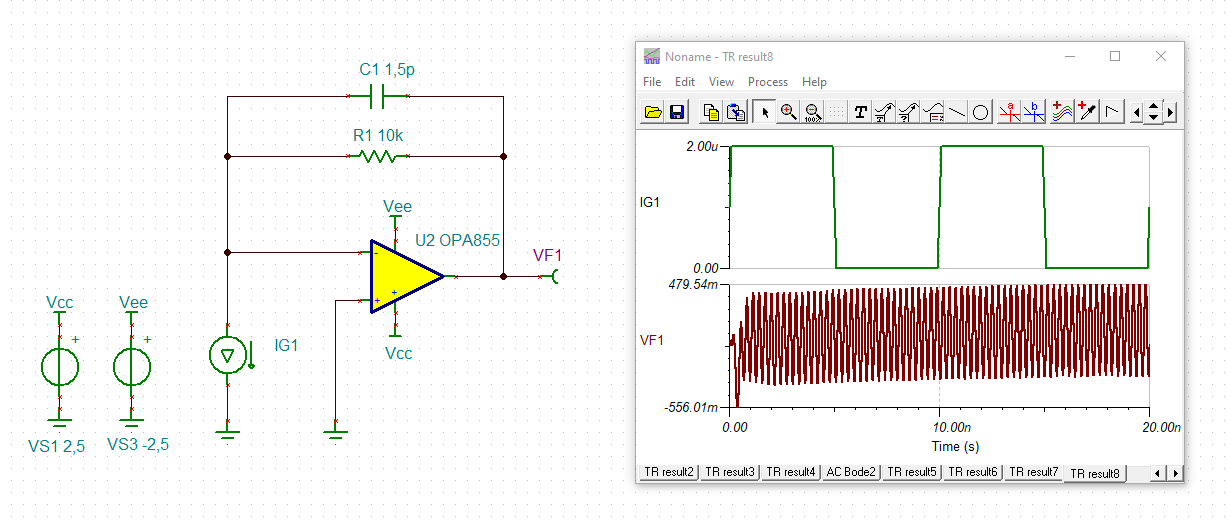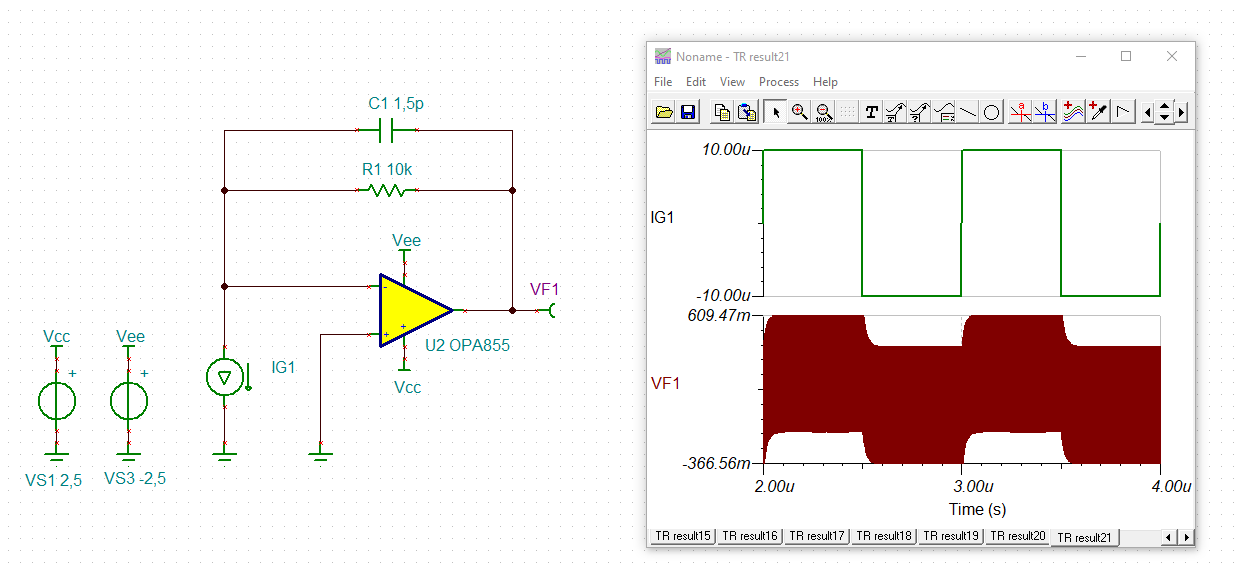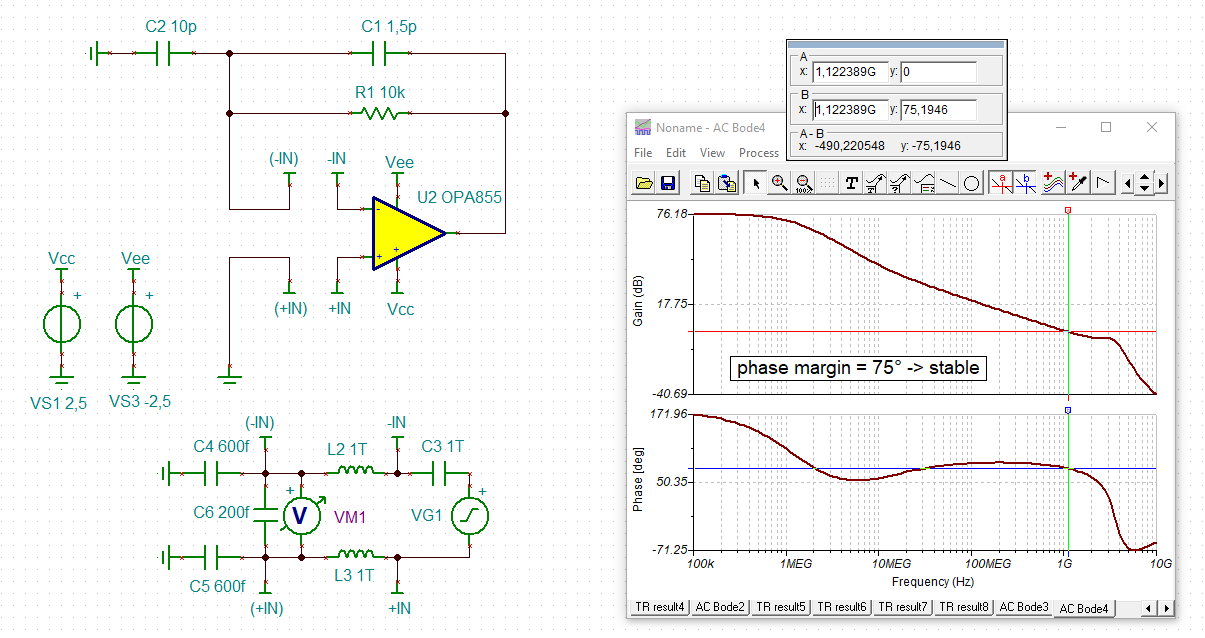Other Parts Discussed in Thread: TINA-TI
We are designing a photodiode detector circuit operating up to 3 GHz with the OPA855. Based on the photodiode capacitance of 4.5 pF and the gain curves in the datasheet, we should be using about 10k Ohms feedback resistor and we would expect about 40 dB of gain at these frequencies.
The problem we are having is that the output voltage appears to give 90-100 dB transimpedance gain, which is much higher than anticipated. Initially we did not trust the result and we started modifying the feedback and other components to see if we could change the output, but we always have very similar values at the output.
The circuit we initially try to use is shown below.

The resulting voltage output is about 350 mV amplitude with about 120 mV DC offset.
After adding the photodiode capacitance of 4.5 pF across the current source, we get about the same results.
Are the results we are getting accurate or realistic? Or is the TIA output oscillating.


